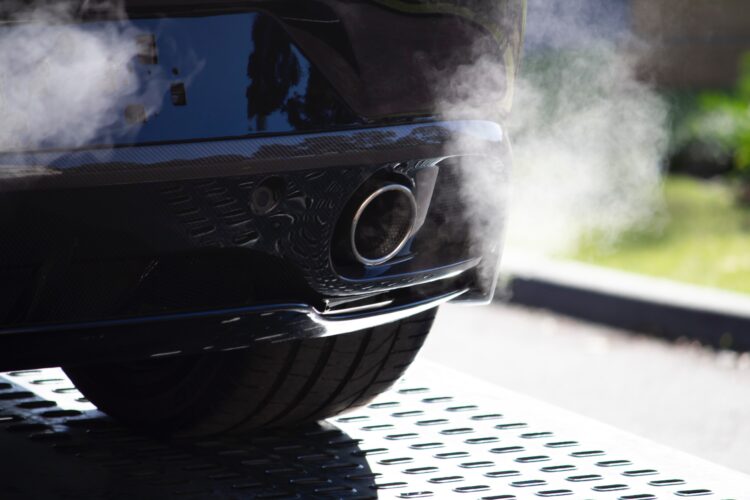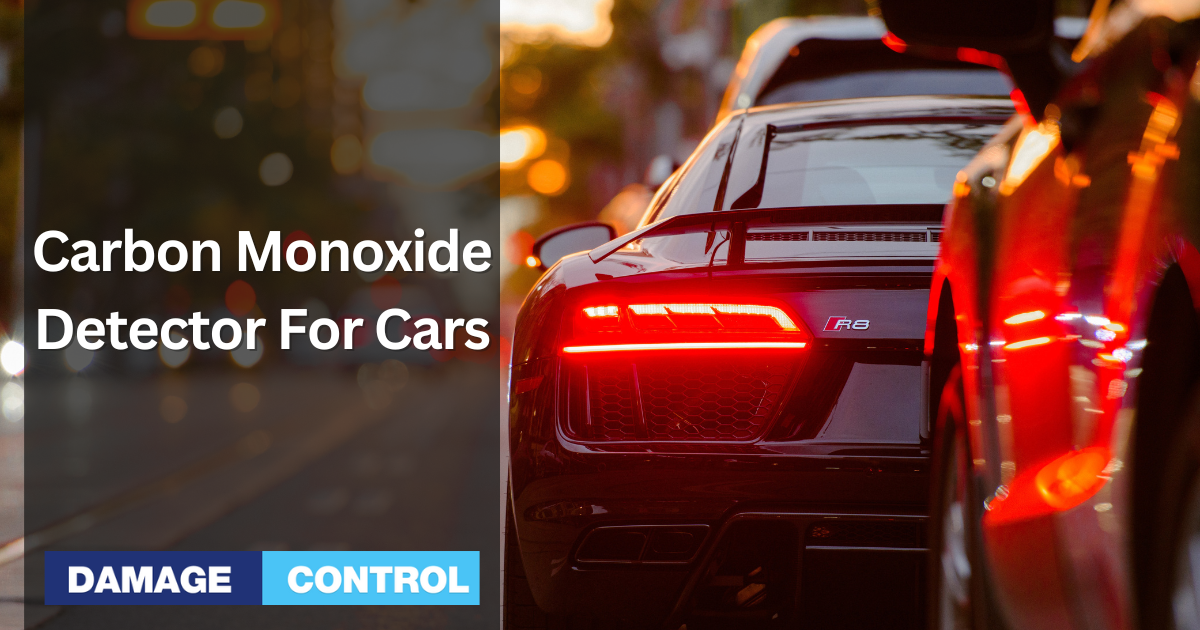When it comes to driving, safety should always be our top priority. We all know that cars produce exhaust fumes. Most of the time your car's exhaust isn't a problem. However, in those fumes lies a hidden danger – carbon monoxide (CO), a colorless and odorless gas that can be harmful or even deadly if inhaled in large amounts.
Understanding Carbon Monoxide

Carbon monoxide is like a sneaky ninja; you can't see it, smell it, or taste it, but it can silently cause harm. It's produced whenever we burn fuel, such as gasoline, in our car engines.
Normally, this gas gets released into the air through the exhaust pipe and doesn't bother us. But if there's a leak or a buildup of carbon monoxide inside the car, it becomes a serious problem.
The Dangers of Carbon Monoxide
Carbon monoxide is a silent and invisible menace that poses significant health threats when inhaled. This odorless gas is especially dangerous because, once inhaled, it swiftly takes the place of oxygen in our bloodstream.
As the oxygen level in our blood diminishes, our bodies struggle to function properly, leading to a series of alarming symptoms.
Individuals who have been exposed to significant amounts of carbon monoxide often report feeling severe headaches that can be debilitating. Along with this, they may feel a sense of dizziness, making it hard for them to maintain balance or even stand.
Nausea is another common symptom, which can sometimes be accompanied by vomiting. Fatigue follows, making victims feel an overwhelming sense of tiredness or weariness, even if they've had ample rest.
One of the most concerning symptoms is confusion, where the affected individual might find it challenging to think clearly, make decisions, or even remember basic details.
In cases of prolonged exposure or high concentrations of carbon monoxide, the consequences become even direr. People can lose consciousness, entering a state of unresponsiveness, and tragically, some might never wake up, succumbing to the deadly effects of the gas.
Given the stealthy nature of this gas and its grave implications, it's crucial for everyone to take preventive measures. Just as we ensure our homes are equipped with smoke detectors to alert us in case of fire, it is equally vital to have carbon monoxide detectors, especially in vehicles.
Cars, particularly those with internal combustion engines, can produce carbon monoxide, and without proper ventilation or in cases of malfunction, the gas can accumulate inside, putting all occupants at risk.
The Importance of a Carbon Monoxide Detector for Your Car
Having a carbon monoxide detector in your car is like having a superhero sidekick, always ready to warn you of any danger. Its primary function is to serve as an advanced warning mechanism. Even if there's a minuscule presence of the harmful gas, this device is adept at detecting it and promptly sounding an alarm.
This swift action ensures that before the carbon monoxide levels escalate to perilous stages, you're well-informed and can take immediate action.
The presence of such a detector becomes even more vital when considering the well-being of your co-passengers.
Whether you're on a solo journey or traveling with loved ones, ensuring everyone's safety against the silent menace of carbon monoxide is paramount.
Beyond safeguarding lives, having this device fosters an environment of trust and reassurance within the vehicle. The knowledge that there's a system in place constantly monitoring for potential threats allows drivers to concentrate better on the road, minimizing distractions stemming from invisible hazards.
Furthermore, undetected carbon monoxide exposure can severely hamper one's ability to drive by impairing judgment and slowing reaction times, which can lead to devastating accidents. With a detector in place, this risk diminishes substantially. Additionally, the detector isn't just about personal safety; it's a diagnostic tool as well.
If there's an internal issue with your car, like a malfunctioning exhaust system that's leaking carbon monoxide, the detector serves as an early alert system, notifying you of potential vehicular problems that require attention.
Choosing the Right Carbon Monoxide Detector
When selecting a carbon monoxide detector for your car, it's essential to prioritize reliability and user-friendliness. Firstly, a battery-powered detector is recommended. This ensures that the device continues to function and monitor the environment even if there's an issue with your car's power supply.
Secondly, having a digital display can be invaluable. Such a feature allows you to view real-time data on carbon monoxide concentrations, offering an immediate insight into the safety of your car's interior.
Additionally, the clarity of the alarm sound is crucial. You'd want a detector that emits a loud and unmistakable alarm, ensuring you don't miss it, even if you're engrossed in a song on the car radio. As for the product's credibility, it's wise to verify its certifications.
A detector that adheres to standards set by reputed organizations like the National Institute for Occupational Safety and Health (NIOSH) or the Underwriters Laboratories (UL) is typically a reliable choice. Lastly, in the interest of convenience, opt for a detector that's low maintenance, ensuring its longevity without demanding frequent attention or adjustments. This way, you can maintain a safe environment in your car without any undue hassle.
Installing Your Carbon Monoxide Detector
Installing a carbon monoxide detector in your car is as easy as putting on a seatbelt. Follow these simple steps:
Find a Suitable Spot
Look for a location in your car that is not obstructed and where air can flow freely. Common mounting spots include the dashboard or near the rearview mirror.
Follow the Manual
Read the user manual of your detector to understand the installation process specific to your model.
Secure the Detector
Use the provided adhesive or mounting bracket to secure the detector in place.
Test It Out
After installation, test the detector to ensure it's working correctly. Most detectors have a test button for this purpose.
Replace Batteries Regularly
Remember to replace the batteries as recommended by the manufacturer to keep the detector functioning effectively.
Maintaining Your Carbon Monoxide Detector
Your superhero detector needs a bit of attention to stay in top shape. Follow these maintenance tips:
Regularly check the detector's digital display or indicator lights to make sure it's functioning correctly.
Clean the detector's sensors periodically to remove any dirt or debris that might interfere with its performance.
If the detector ever alerts you of high carbon monoxide levels, take it seriously. Pull over to a safe location, turn off the engine, and open the windows to let fresh air in.
Conclusion
When you're on the road, a carbon monoxide detector can be a true lifesaver. It keeps you and your passengers protected from the invisible threat of carbon monoxide poisoning.
Remember, even the tiniest gas leak can be harmful, but with a reliable detector by your side, you can drive with peace of mind, knowing you have a guardian against this silent danger.
So, equip your car with a carbon monoxide detector and embark on every journey with safety as your trusted co-pilot. Safe travels!


